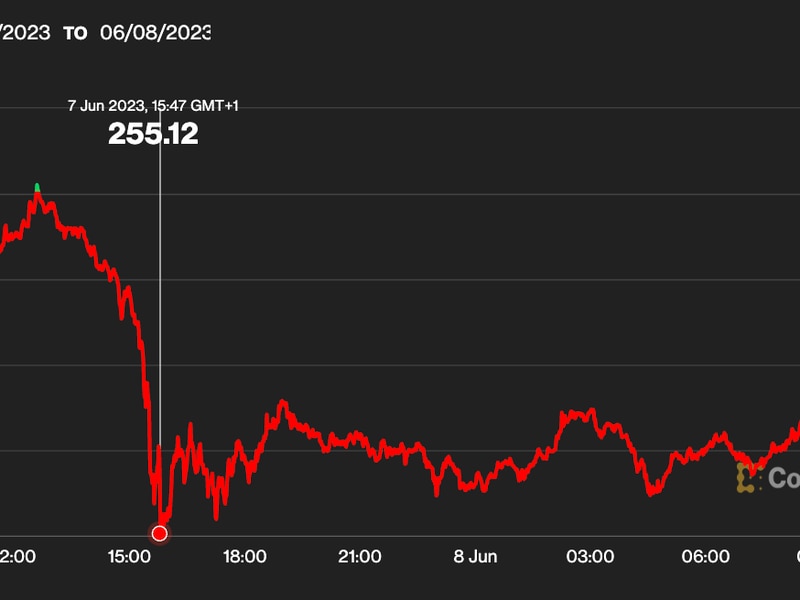Ether Leads Post-Fed Crypto Market Rally as Yen Weakness Sparks Risk-On Frenzy
-
The U.S. Dollar Index climbs above 101, while a weakened yen fuels risk-on momentum.
-
Ether skyrockets 14%, with meme coins leading a 40% surge; bitcoin gains but loses market dominance.
-
Oil jumps 2% amid middle eastern tensions, gold rallies, and Nvidia and S&P 500 ride the risk-on wave.
On Sept. 18, the Federal Open Market Committee (FOMC) made a pivotal decision that significantly impacted risk-on assets. The Federal Reserve cut interest rates by 50 basis points, setting a new target range for the federal funds rate at 4.75% to 5.00%.
This move sparked debate, with some arguing that the Fed may have been late in the rate-cutting cycle, potentially signaling an impending recession. Historically, the last two times the Federal Reserve started with a 50 basis point rate cut were the 2001 and 2008 recessions, raising concerns that this current cut might signal similar economic challenges.
:format(jpg)/cloudfront-us-east-1.images.arcpublishing.com/coindesk/24OXA25NNFESLAVHURFESA23JI.png)
However, others suggest that the Federal Reserve may be navigating a “Goldilocks” period—where the economy grows sustainably. U.S. GDP growth for Q2 was a solid 3% on an annualized basis, and headline inflation has fallen to 2.5%, the lowest level since March 2021, reducing the need for real rates to remain this elevated (the real rate is the difference between the Fed’s target rate and the inflation rate). Furthermore, the Atlanta Fed’s GDPNow model predicts a Q3 GDP growth estimate of 2.9%, further supporting a balanced economic environment.
Impact on key macro assets
The development has been the significant rebound in the crypto market. Ether (ETH) surged nearly 14%, highlighting a resurgence of investor risk appetite. Within the cryptocurrency space, cat-themed meme coins have led the charge, emerging as some of the top performers with gains of 40% in just a week. Bitcoin (BTC) also saw a gain of over 5%, although its dominance in the crypto market dipped below 58%, signaling a broad-based rally across other digital assets.
Following the FOMC decision, several key macro assets have reacted positively. The U.S. Dollar Index (DXY) rose by 0.36%, pushing the index back above 101, a level widely regarded as vital. Meanwhile, the USD/JPY exchange rate, which had dropped to around 141 just before the Fed’s announcement, has since climbed to approximately 143.5. The weakening yen has further bolstered risk-on assets, including cryptocurrencies.
Crude oil prices have climbed over 2%, potentially influenced by ongoing geopolitical tensions in the Middle East. Gold, a traditional safe haven, also saw gains. Additionally, Nvidia (NVDA) shares increased by just under 2%, while the S&P 500 index (SPX) rose by over 1%, indicating that risk-on asset classes broadly welcomed the Fed’s decision.
:format(jpg)/cloudfront-us-east-1.images.arcpublishing.com/coindesk/EG7YTQESYFGI7NJ2V3LJ5CV4N4.png)
Crypto ETFs see inflows
The buoyancy in the cryptocurrency market was further supported by inflows into both ether and bitcoin ETFs on Sept. 19 and 20. Ether-based ETFs recorded $8.1 million in inflows over these two days, while bitcoin ETFs saw much larger inflows of $250.3 million, according to Farside data.
Performance of market capitalization groups
When analyzing performance from a broader market perspective, it becomes clear that large, mid, and small-cap coins all faced underperformance in the lead-up to the FOMC decision.
However, coming out of the FOMC decision, small-cap cryptocurrencies have emerged as the biggest winners. Despite their early struggles, all three capitalization groups—large, mid, and small caps—have now made relative highs against bitcoin since the Fed’s announcement, reflecting a general increase in risk-on sentiment and liquidity across financial markets.
Market capitalization groups are typically defined as follows: large-cap stocks have a market capitalization greater than $1 billion, mid-caps fall between $100 million and $1 billion, and small caps range from $50 million to $100 million.
:format(jpg)/cloudfront-us-east-1.images.arcpublishing.com/coindesk/7DPU4RWOLBGPPIOJQDBLDP5XGM.png)
Looking ahead, the CME Fed Funds futures are evenly split, with a 50/50 probability of either a 25 or 50 basis point rate cut at the upcoming Nov. 7 FOMC meeting, scheduled just two days after the U.S. presidential election.
Edited by Omkar Godbole.
Disclosure
Please note that our
privacy policy,
terms of use,
cookies,
and
do not sell my personal information
has been updated
.
CoinDesk is an
award-winning
media outlet that covers the cryptocurrency industry. Its journalists abide by a
strict set of editorial policies.
In November 2023
, CoinDesk was acquired
by the Bullish group, owner of
Bullish,
a regulated, digital assets exchange. The Bullish group is majority-owned by
Block.one; both companies have
interests
in a variety of blockchain and digital asset businesses and significant holdings of digital assets, including bitcoin.
CoinDesk operates as an independent subsidiary with an editorial committee to protect journalistic independence. CoinDesk employees, including journalists, may receive options in the Bullish group as part of their compensation.
:format(jpg)/author-service-images-prod-us-east-1.publishing.aws.arc.pub/coindesk/7fe88428-ae49-4453-ab19-5cfbf125689b.png)








